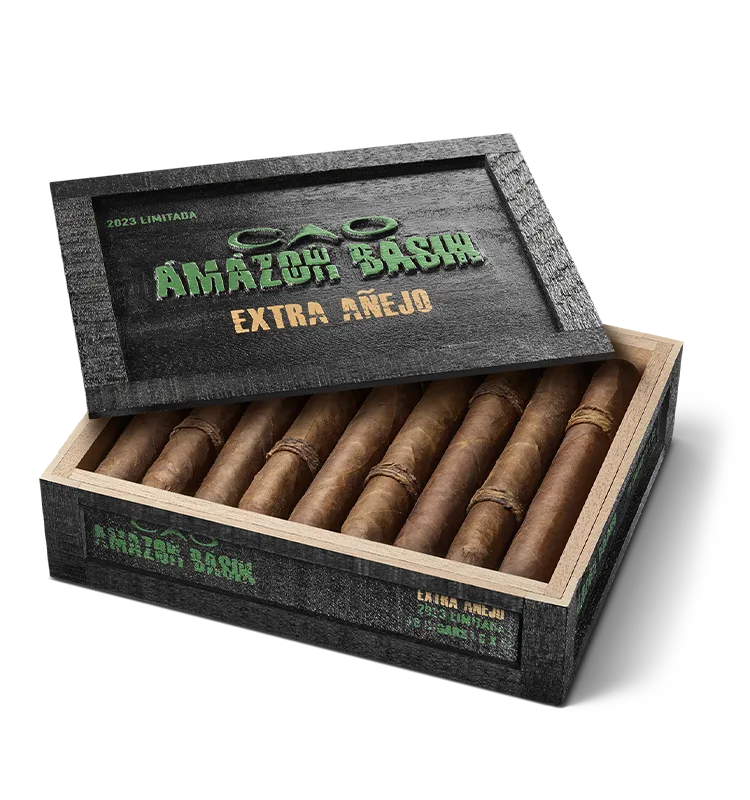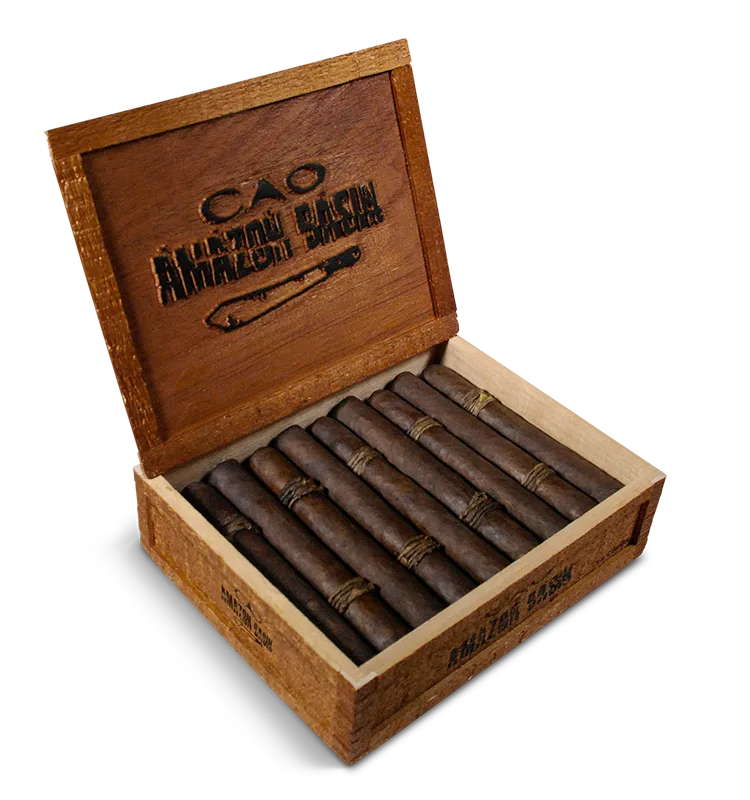Category
- ACCESSORIES(69)
- Arturo Fuente(17)
- Bolivar(14)
- CAO(4)
- Cohiba(18)
- Cuaba(7)
- CUBAN CIGARS(257)
- Cutters(12)
- Davidoff(17)
- Diplomaticos(2)
- El Rey del Mundo(4)
- Fonseca(5)
- Guayaberas(4)
- H. Upmann(19)
- Hoyo de Monterrey(16)
- José L. Piedra(8)
- Juan López(4)
- La Flor de Cano Cigars(2)
- La Gloria Cubana(7)
- LCDH Editions(27)
- Lighters(26)
- Limited Editions(10)
- Montecristo(25)
- NEW WORLD CIGARS(49)
- NON CUBAN(3)
- Partagàs(29)
- Perdomo(2)
- Quintero(8)
- Regional Editions(10)
- Regular Production(203)
- Remeo Y Julieta(31)
- Saint Luis Rey(2)
- San Cristóbal de La Habana(8)
- Sancho Panza(3)
- Single Cigars(35)
- Trinidad(8)
- Vegas Robaina(6)
- Vegueros(5)
Filter by price
Rating
Showing all 3 resultsSorted by popularity
CAO cigars
CAO cigars
Cano A. Ozgener founded the cigar label CAO after emigrating to the USA. He focused on producing high-quality cigars that impress with innovative blends and creative packaging. CAO is particularly known for its distinctive variety of flavors. The brand offers specialties such as the Limited Editions and the Pilon series, which are based on traditional fermentation methods.
Enjoyment and design for the eyes and palate
It may certainly be a coincidence in the colourful and centuries-old history of the cigar. But the parallels between Avo Uvezian and his cigar label AVO and Cano Aret Özgener, whose cigar empire CAO has a firm foothold in the hearts of aficionados, are more than striking. Both come from an ancient culture of Middle Eastern traders – Özgener was born in 1937 as a native Turk of Armenian descent in the Istanbul district of Moda.
Both paths in life were full of twists and turns and sometimes breaks , which ultimately led them to their determination to dedicate their lives to the development and refinement of the best cigars . And both are connected to music – one professionally, the other because of his hometown – Uvezian as a trained pianist, Özgener, who played the violin since childhood and (was it a coincidence?) found his new home in Nashville, the city of country music. Perhaps that is the deeper truth as to why both brands, why CAO cigars, are among the best premium longfillers that cigar lovers can buy and enjoy.
From Meerschaum Pipes and First Cigar Attempts
Özgener, who is better known as Cano A. Ozgener in his adopted homeland of the United States, is one of the few internationally known cigar manufacturers who also has a face and a biography behind them. Although tobacco consumption played a role very early in his life, less because of his own consumption than because of the centuries-old traditions of pipe smoking in his Turkish homeland, Özgener initially took a completely different path.
In 1961, the intelligent and energetic young man emigrated to the USA and studied mechanical engineering at New York’s Columbia University. During his studies, he met his future wife Esen, who made him move to the more tranquil North Carolina to start a family and raise children. As the tinkerer and inventor that he always was, he initially worked on constructing tobacco pipes and improving their draw and burn characteristics.
He and his family had already moved to Nashville, Tennessee, when, in the late 1960s, he began to enjoy increasing success with his self-designed meerschaum pipes , which he had manufactured to his specifications in his old hometown of Eskişehir , a city famous for this art form, where this art has been practiced since ancient times. In 1977, he finally gave up his job as an engineer at DuPont to devote himself entirely to his own business.
Soon, Turkish folklore wooden boxes converted into humidors and artistically decorated cigar boxes were added. In 1980, he tried his hand at cigar manufacturing for the first time – and failed. In 1995, with the help of his experienced Cuban colleagues Nestor Plasencia and Carlos Toraño, he started a second time – this time under the label with the later widely famous initials CAO. The times were also different now, as cigar consumption was booming in the USA. The “Black” was the first CAO cigar to establish itself on the market for the long term, as it embodied his unconditional will to perfection . When storms caused by El Niño destroyed entire harvests in 1996, Özgener showed that he was serious about quality: he stopped production for a few years because he was convinced that there was no high-quality tobacco for his “Black”.
Back in Black
In 2002, the “Black” returned, one of the most important CAO cigars that Özgener was able to establish. And its spicy, soft aromas were of even higher quality than before. The blends, i.e. the finely balanced mixtures and compositions of different tobaccos, were initially born out of necessity, as Özgener was unable to put together tobaccos to create a perfect puro. However, over the decades these blends have become a real trademark of CAO cigars and are one reason why there is such a wide range of aromas and flavors – from strong to mild, there is everything that makes the aficionado’s heart beat faster.
The eye smokes with
At CAO, we strive for perfection , not just on the inside, but also on the outside . After all, visually appealing packaging is part of the overall cigar experience, and Özgener’s creative son Murat, who also calls himself Tim, lets his creative passion run free. His innovative box design really makes you want to discover the fantastic cigars inside!
His father, who had already retired from active business operations, died in 2018. CAO is now part of the Scandinavian Tobacco Group , and the move brought some changes to the portfolio. STG added new lines to the label, but others were discontinued.
series
Within the STG range, CAO is one of the most experimental labels with its characteristics . Typical of this is the deep dark and oily broadleaf wrapper of the Session , but also the somewhat “heartier” style of the Bones series . Experienced aficionados looking for a cigar that is easy to smoke at any time of day should give the Nicaragua a try.
The special thing, however, can be found in the limited edition, and the Pilon has something quite extraordinary in store: it processes tobacco that is fermented in the traditional way. In the past, people did not use meter-long, man-high stacks like today, but rather smaller piles were stacked. They have to be turned regularly, but the effort is worth it. Ammonia and sugar are broken down more effectively, which is said to have a positive effect on the burning behavior.




































